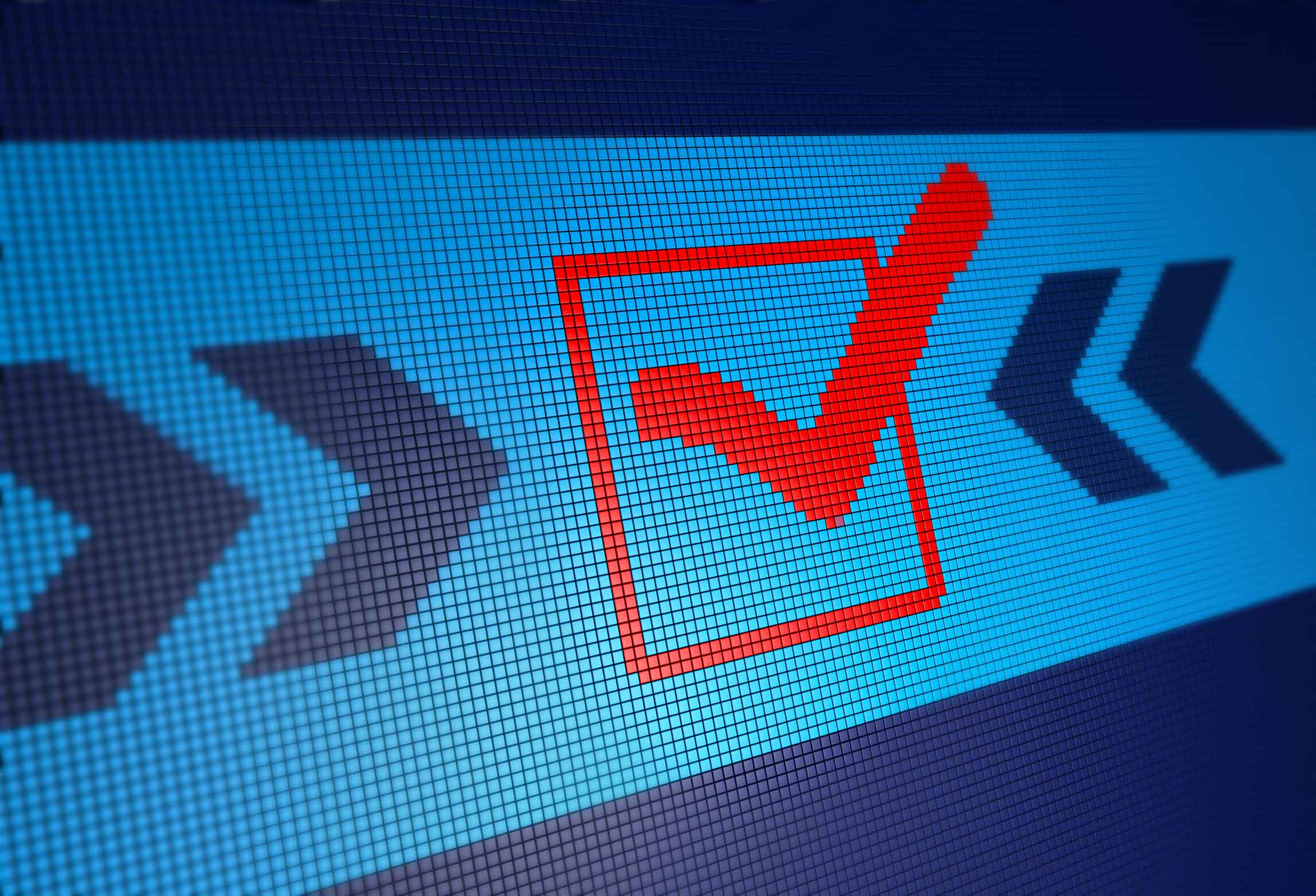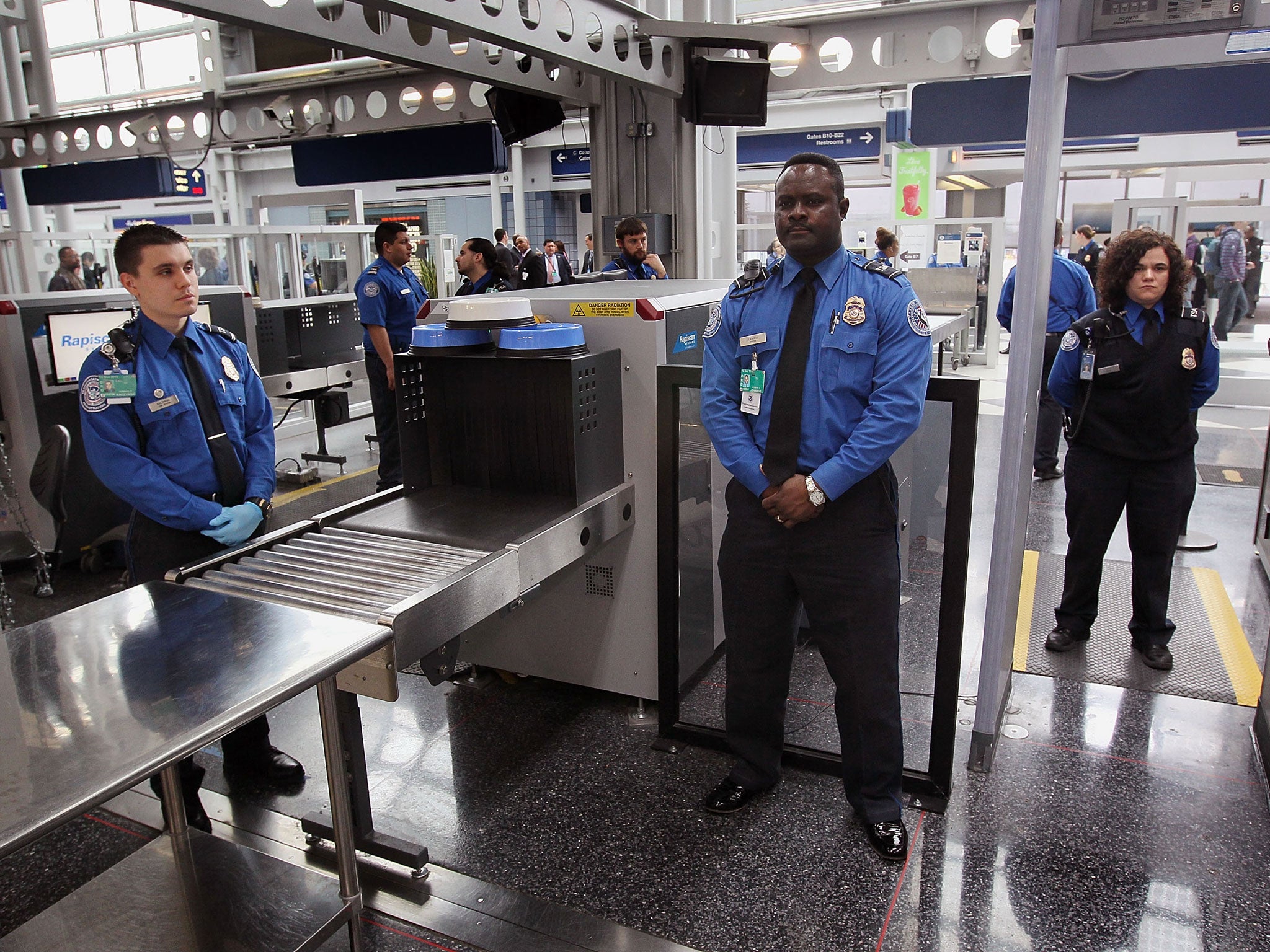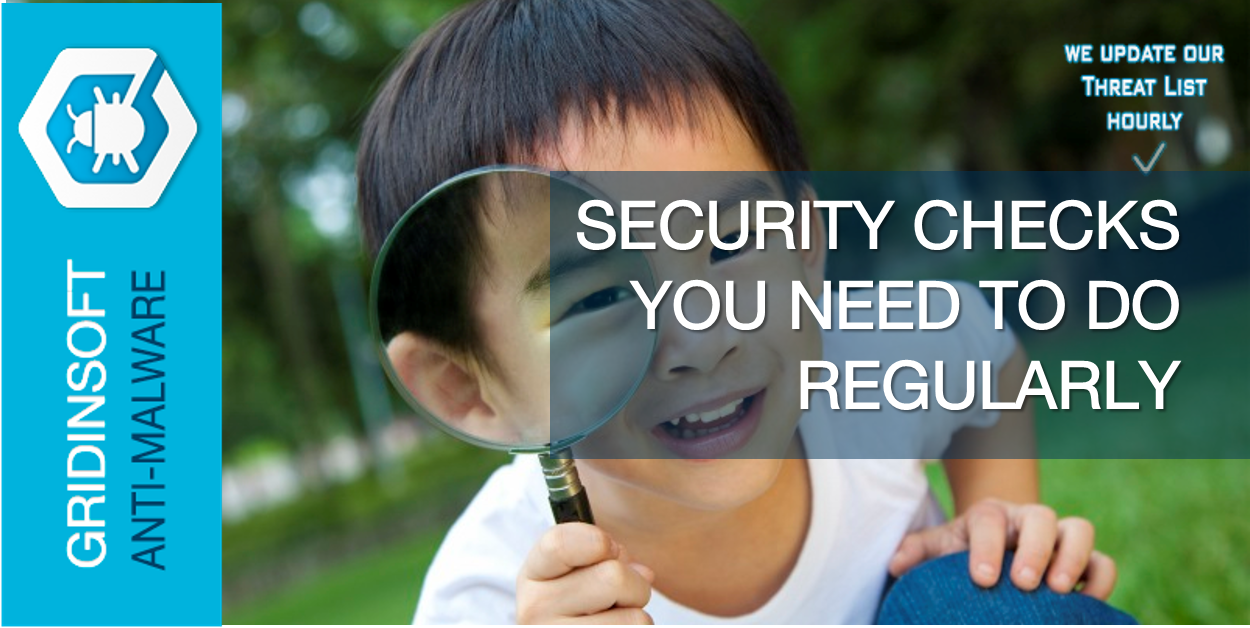Do I need high security checks? It’s a question that arises when dealing with sensitive information or critical infrastructure. Understanding the level of security required is crucial for protecting data, assets, and reputation. From background checks to sophisticated security clearances, the world of security checks offers a spectrum of options, each tailored to specific needs and risks.
The level of security required depends on factors like the sensitivity of the data, potential threats, and legal requirements. Government agencies, financial institutions, and organizations managing critical infrastructure often implement high security checks to mitigate risks and maintain trust. These checks are designed to identify potential vulnerabilities and prevent security breaches, safeguarding sensitive information and ensuring the integrity of operations.
Understanding Security Needs

Determining the right level of security for your data and systems is crucial. It’s a balancing act between protecting sensitive information and maintaining operational efficiency. Understanding the various levels of security, the factors that influence them, and the effectiveness of different measures can help you make informed decisions.
Levels of Security
Security levels are often categorized as low, medium, and high. The level of security required depends on the sensitivity of the data, the potential threats, and legal obligations.
- Low Security: This level is suitable for data that is not particularly sensitive, such as public information or data that is not critical to operations. Examples include general contact information or marketing data. Measures for low security may include basic access control, password protection, and regular backups.
- Medium Security: This level is appropriate for data that requires a higher level of protection, such as financial information or customer data. It involves more robust security measures, including firewalls, intrusion detection systems, and encryption.
- High Security: This level is for extremely sensitive data, such as classified government information or financial transactions. It involves multi-factor authentication, strict access controls, and advanced security monitoring.
Factors Influencing Security Levels
Several factors influence the level of security required:
- Data Sensitivity: The most crucial factor is the sensitivity of the data. Data that could lead to significant financial loss, reputational damage, or legal repercussions requires a higher level of security.
- Potential Threats: The potential threats to your data and systems also play a role. A company with a high-profile target for cyberattacks would need more robust security measures than a small business with minimal risk.
- Legal Requirements: Legal and regulatory requirements can dictate the level of security needed. For example, financial institutions are subject to strict regulations regarding data protection and security.
Security Measures and Their Effectiveness
A variety of security measures can be implemented to protect data and systems. Their effectiveness depends on the specific threat and the level of security required.
- Firewalls: Firewalls act as a barrier between your network and the outside world, blocking unauthorized access. They are effective in preventing basic attacks but can be bypassed by sophisticated attackers.
- Intrusion Detection Systems (IDS): IDS monitor network traffic for suspicious activity and alert administrators to potential threats. They are effective in detecting known attacks but may miss novel or sophisticated attacks.
- Encryption: Encryption transforms data into an unreadable format, making it difficult for unauthorized parties to access. It is an effective way to protect data in transit and at rest, but it can be computationally expensive.
- Multi-Factor Authentication (MFA): MFA requires users to provide multiple forms of authentication, such as a password and a code sent to their phone, before granting access. It is a highly effective measure against unauthorized access, but it can be inconvenient for users.
Types of Security Checks
Security checks are essential for various purposes, ranging from ensuring the safety of sensitive information to verifying the trustworthiness of individuals. These checks can be categorized based on their objectives, methodologies, and the information they seek to uncover.
Background Checks, Do i need high security checks
Background checks are comprehensive investigations into an individual’s past to verify their identity, employment history, education, and criminal record. They are commonly used by employers, landlords, and government agencies to assess an individual’s suitability for a specific role or responsibility.
- Purpose: To verify the accuracy of information provided by an individual and to identify any potential risks associated with their background.
- Scope: Typically includes verification of employment history, education, criminal records, and references. In some cases, it may also include a review of social media profiles and online activity.
- Methodology: Involves contacting previous employers, educational institutions, and law enforcement agencies to confirm the accuracy of information provided by the individual. This can be done through phone calls, emails, and written requests.
Credit Checks
Credit checks assess an individual’s creditworthiness by reviewing their credit history and financial behavior. They are often conducted by lenders, landlords, and insurance companies to determine the risk associated with extending credit or providing financial services.
- Purpose: To evaluate an individual’s ability and willingness to repay debts, as well as their overall financial responsibility.
- Scope: Includes information about an individual’s credit card usage, loan history, and payment history. This information is compiled by credit bureaus and used to generate a credit score.
- Methodology: Involves obtaining an individual’s credit report from one or more credit bureaus. This report provides a detailed overview of their credit history and is used to calculate their credit score.
Security Clearance Investigations
Security clearance investigations are rigorous assessments conducted by government agencies to determine an individual’s suitability for access to classified information or sensitive positions. These investigations are highly comprehensive and involve a thorough examination of an individual’s background, personal relationships, and financial history.
- Purpose: To ensure that individuals with access to sensitive information or positions of trust are trustworthy and pose no threat to national security.
- Scope: Includes a comprehensive review of an individual’s background, including their employment history, education, financial history, criminal record, and personal relationships. This may also involve interviews with friends, family members, and former colleagues.
- Methodology: Involves a multi-stage process that can include interviews, polygraph tests, background checks, and financial audits. The investigation is conducted by highly trained security professionals who use specialized techniques to assess an individual’s trustworthiness and suitability for the clearance level requested.
Situations Requiring High Security Checks: Do I Need High Security Checks

High security checks are implemented in situations where the potential consequences of a security breach are significant. These checks are designed to mitigate risks, protect sensitive information, and ensure the safety of individuals and assets. The need for high security checks is particularly pronounced in sectors where national security, financial stability, or public safety are at stake.
Government Agencies
Government agencies are responsible for protecting sensitive information related to national security, law enforcement, and public policy. This information can include classified documents, intelligence reports, and personal data of citizens. High security checks are essential for preventing unauthorized access to these sensitive assets, which could compromise national security or harm individuals.
- Background checks: These checks verify the identity and trustworthiness of individuals seeking employment or access to classified information. They involve reviewing criminal records, financial history, and personal references.
- Security clearances: These clearances are granted to individuals who have undergone rigorous vetting processes to ensure they meet specific security standards. They allow access to classified information and restricted areas.
- Physical security measures: Government facilities are equipped with advanced security measures, such as surveillance systems, access control systems, and perimeter fencing, to deter unauthorized entry and protect against physical threats.
Financial Institutions
Financial institutions handle vast sums of money and sensitive personal data, making them prime targets for cyberattacks and financial crimes. High security checks are crucial for protecting customer accounts, financial transactions, and the integrity of the financial system.
- Cybersecurity measures: Financial institutions invest heavily in cybersecurity infrastructure, including firewalls, intrusion detection systems, and encryption technologies, to prevent unauthorized access to their systems and customer data.
- Fraud detection systems: These systems use sophisticated algorithms to identify and prevent fraudulent transactions, such as unauthorized account access or identity theft.
- Employee training: Financial institutions train their employees on security best practices, such as password management, phishing awareness, and data handling procedures, to minimize the risk of internal security breaches.
Critical Infrastructure
Critical infrastructure, such as power grids, water treatment plants, and transportation systems, is essential for the functioning of modern society. These systems are vulnerable to cyberattacks and physical disruptions, which could have devastating consequences for public safety and economic stability.
- Cybersecurity protocols: Critical infrastructure operators implement stringent cybersecurity protocols to protect their control systems from cyberattacks, ensuring the reliability and safety of these vital services.
- Physical security measures: These systems are protected by physical security measures, such as fences, surveillance cameras, and access control systems, to prevent unauthorized access and sabotage.
- Emergency response plans: Critical infrastructure operators develop and regularly test emergency response plans to mitigate the impact of potential security breaches or disruptions.
Benefits of High Security Checks

Implementing high security checks brings numerous benefits to individuals and organizations, significantly enhancing their overall security posture and mitigating potential risks. By incorporating robust security measures, organizations can effectively protect sensitive data, reduce the likelihood of fraud, and build a strong reputation for trustworthiness.
Reduced Risk of Fraud
High security checks play a crucial role in safeguarding against fraudulent activities. By implementing stringent verification processes, organizations can significantly reduce the risk of unauthorized access, identity theft, and financial losses. For example, multi-factor authentication, which requires users to provide multiple forms of identification, significantly hinders unauthorized access attempts. This layered approach makes it much harder for fraudsters to gain access to sensitive information, thereby minimizing the risk of financial losses and reputational damage.
Protection of Sensitive Information
Organizations that handle sensitive data, such as personal information, financial records, or intellectual property, must prioritize robust security measures. High security checks, including data encryption, access control mechanisms, and regular security audits, effectively protect this sensitive information from unauthorized access, modification, or disclosure. By implementing these measures, organizations demonstrate their commitment to data privacy and security, building trust with their customers and stakeholders.
Enhanced Trust and Reputation
In today’s digital landscape, trust is paramount. Organizations that prioritize high security checks demonstrate their commitment to protecting their customers and their data. This proactive approach fosters trust and enhances the organization’s reputation. For instance, a financial institution that implements robust security measures, such as encryption and multi-factor authentication, builds a strong reputation for reliability and trustworthiness, attracting and retaining customers.
Improved Organizational Security Posture
High security checks contribute significantly to an organization’s overall security posture. By implementing comprehensive security protocols, organizations can identify and mitigate vulnerabilities, reducing the risk of cyberattacks and data breaches. Regular security audits, vulnerability assessments, and proactive security updates ensure that the organization’s security infrastructure remains robust and resilient. This proactive approach helps organizations stay ahead of emerging threats and maintain a secure operating environment.
Increased Customer Confidence
Customers are increasingly concerned about the security of their personal information. Organizations that prioritize high security checks demonstrate their commitment to protecting customer data, building trust and confidence. This, in turn, leads to increased customer satisfaction, loyalty, and positive word-of-mouth referrals.
Compliance with Regulations
Many industries are subject to strict regulations regarding data privacy and security. Implementing high security checks ensures compliance with these regulations, minimizing the risk of fines, penalties, and reputational damage. For example, the General Data Protection Regulation (GDPR) mandates specific security measures for organizations handling personal data within the European Union. By adhering to these regulations, organizations demonstrate their commitment to responsible data handling and maintain a positive relationship with regulatory bodies.
Challenges and Considerations
Implementing high security checks, while crucial for protecting sensitive information and assets, presents several challenges that require careful consideration. These challenges encompass various aspects, including financial implications, time constraints, and ethical concerns.
Cost and Time Implications
Implementing high security checks often entails significant financial investments and time commitments. The cost of implementing these checks can vary depending on the complexity of the security measures required, the technology involved, and the size of the organization. For example, installing advanced surveillance systems, conducting thorough background checks, and employing security personnel can be expensive. Moreover, the time required to implement these checks can be substantial, particularly when dealing with complex procedures or large volumes of data.
This can disrupt operations and potentially delay projects.
Privacy Concerns
High security checks raise significant privacy concerns, as they often involve collecting and analyzing personal information about individuals. This can be particularly sensitive in cases where sensitive data, such as medical records, financial information, or personal identification details, is involved. It is crucial to ensure that the collection and use of personal data are conducted ethically and legally, respecting individuals’ privacy rights.
Ethical Implications
Conducting high security checks raises ethical considerations, particularly in terms of balancing security needs with individual rights. It is essential to ensure that these checks are implemented in a fair, transparent, and non-discriminatory manner. This involves considering the potential impact on individuals and ensuring that the checks are proportionate to the risks involved. For instance, implementing intrusive security measures that disproportionately target specific groups based on their race, religion, or other characteristics can raise ethical concerns.
Recommendations for Mitigation
To mitigate the challenges and ensure responsible implementation of high security checks, it is essential to adopt a balanced approach that prioritizes security without compromising individual rights. This can be achieved through the following recommendations:
- Conduct a thorough risk assessment: Identify the specific security risks and vulnerabilities that need to be addressed. This will help to determine the appropriate level of security checks required.
- Implement proportionate security measures: Ensure that the security measures implemented are proportionate to the risks involved. This means avoiding overly intrusive measures that may not be justified by the potential threat.
- Adopt a privacy-by-design approach: Incorporate privacy considerations into the design and implementation of security checks. This involves minimizing the collection of personal data, using data only for legitimate purposes, and ensuring the security and confidentiality of collected information.
- Provide transparency and accountability: Communicate clearly with individuals about the security checks being implemented, the purpose of these checks, and the data being collected. Establish mechanisms for individuals to access their data and challenge decisions made based on security checks.
- Ensure ongoing review and evaluation: Regularly review and evaluate the effectiveness of security checks and their impact on individuals. This helps to ensure that the checks remain appropriate and necessary, and that any unintended consequences are addressed.
Future Trends in Security Checks
The realm of security checks is constantly evolving, driven by technological advancements and the ever-changing landscape of threats. Emerging trends like artificial intelligence (AI) and biometrics are transforming how we approach security, promising greater efficiency, accuracy, and effectiveness.
Impact of AI and Biometrics
The integration of AI and biometrics into security checks holds significant potential to reshape the future of security. AI-powered systems can analyze vast amounts of data, identify patterns, and predict potential threats with remarkable accuracy. Biometric technologies, such as facial recognition, iris scanning, and fingerprint analysis, offer a unique and reliable way to authenticate individuals, making it more difficult for unauthorized individuals to gain access.
- Enhanced Threat Detection: AI algorithms can analyze real-time data from various sources, including surveillance cameras, social media, and online activity, to identify potential threats and anomalies. This proactive approach can help prevent attacks before they occur.
- Personalized Security: AI can tailor security measures to individual profiles and behaviors, providing a more personalized and efficient experience. For example, a system could identify frequent visitors and automatically adjust security protocols accordingly.
- Automated Security Processes: AI-powered systems can automate repetitive tasks, such as screening baggage or verifying identities, freeing up human security personnel to focus on more complex and strategic tasks.
- Reduced False Positives: Biometric technologies can significantly reduce the number of false positives, leading to fewer delays and disruptions. This improves the overall efficiency and effectiveness of security checks.
Hypothetical Scenario: Future Security at a Major Airport
Imagine a future airport where security checks are seamless and efficient. Passengers arrive at the airport and are greeted by a smart kiosk equipped with facial recognition technology. The kiosk verifies the passenger’s identity and automatically updates their boarding pass with their security clearance status. As passengers proceed through the airport, AI-powered cameras monitor their movements and behavior, identifying any potential threats in real-time.
These cameras are equipped with facial recognition software that can identify individuals who are on watchlists or have been flagged for suspicious behavior. In the baggage screening area, advanced imaging systems powered by AI can analyze luggage contents and detect any prohibited items with high accuracy. This technology can also identify potential explosives and other dangerous materials, significantly reducing the risk of security breaches.
This hypothetical scenario illustrates how AI and biometrics can transform the future of security checks at airports, making them more efficient, secure, and passenger-friendly.
Navigating the landscape of security checks requires a careful balance between safeguarding sensitive information and maintaining ethical practices. By understanding the different types of checks, their benefits, and potential challenges, organizations can make informed decisions to protect their assets and build trust with stakeholders. As technology evolves, so too will the methods of security checks, promising more sophisticated and effective solutions to protect against emerging threats.
FAQ Summary
What are the most common types of security checks?
Common types include background checks, credit checks, criminal record checks, and security clearance investigations.
How can I determine the level of security required for my organization?
Consider the sensitivity of your data, potential threats, legal requirements, and industry best practices.
What are the ethical considerations involved in conducting security checks?
Ensure compliance with privacy laws, obtain informed consent, and use checks responsibly and proportionally.






